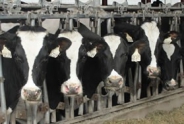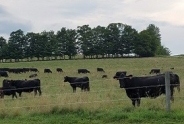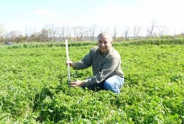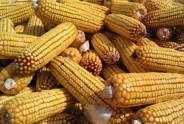Field Crop Update July 16, 2021
Erik Smith, Area Field Crop Specialist/Team Leader
Central New York Dairy and Field Crops
1. Field Observations
I don't think it's news to anyone reading this that we needed yesterday's sunshine. I saw lots of folks making hay - some that were right on schedule and others who had to wait for the rain to pass.
Corn is generally V9-V12 and I've heard that some are at VT. When planning for silage harvest, take note of your silking date: "The date of silking can be used to determine silage harvest date based on growing degree day (GDD) accumulation. Work in New York by Dr. Bill Cox Using the Number of Growing Degree Days from the Tassel/Silking Date to Predict Corn Silage Harvest Date showed that the crop needs 750-800 GDD's after silking to reach a whole plant DM of 32 percent. Under typical late season dry down conditions we can expect the crop to reach 35 percent DM four to seven days later." - J. Lawrence, K. Czymmek (Corn Silage 2019: Two Different Crops)
Soybeans are entering the R stages, so this is the time to decide whether or not to protect them from white mold if you've had a history of it in your fields and if you have the option to do so. Given the weather at the moment, the risk is high just about everywhere. For more information on when and what to spray for white mold, here is that info from NYSIPM: White Mold of Soybean: What to expectwith variable growth stages - What's Cropping Up? Blog (cornell.edu) and here is a product table for other diseases of soybean in NY: Diseases of Soybeans | Field Crops(cornell.edu).
2. Growing Degree Days as of July 14th (See: Climate Smart Farming Growing Degree Day Calculator)
Growing degree days (GDD) are calculated by taking the average daily temperature and subtracting the base temperature for development of a given organism ((High + Low)/2 - base temp = GDD). For corn silage, we are using base 50/86, as corn development starts at 50 degrees F and ceases above 86.
Changing things up starting this week! With the onset of tasseling and silking, here are GDDs for both planting date and silking date so folks have an idea of crop development in advance of silage harvest. Your actual silk date will most likely fall sometime within the range of dates listed on the right side of the table no matter where you are and what variety you're planning to chop:
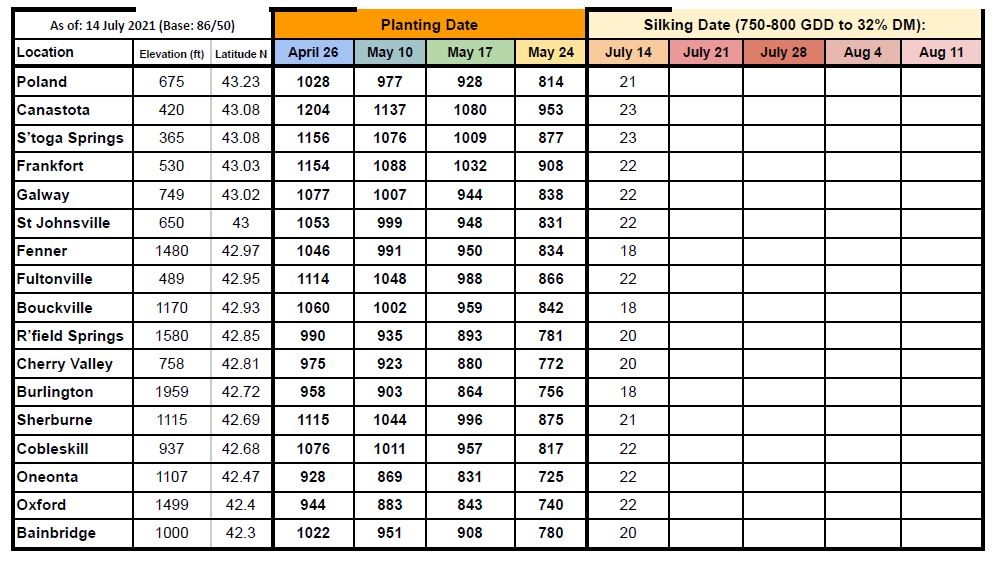
Not everyone planted their corn on one of the planting dates or in one of the locations I have listed, so this chart shows the estimated GDD for each location on each potential planting date in between (based on the actual GDD on those four dates). The locations are ordered top-to-bottom from lowest elevation to highest (the number after the location name is the elevation in feet above sea level). The GDD at locations on this list with nearly identical elevations were generally no more than 50 GDD apart, and usually within 25 GDD. So if your farm is near one of the locations on this list but there's a location here that more closely matches your elevation, try that instead. You can find GDDs for your own specific location and planting date using the Climate Smart Farming CSF Growing Degree Day Calculator, but for those who might have more difficulty using that tool, maybe this chart can help.
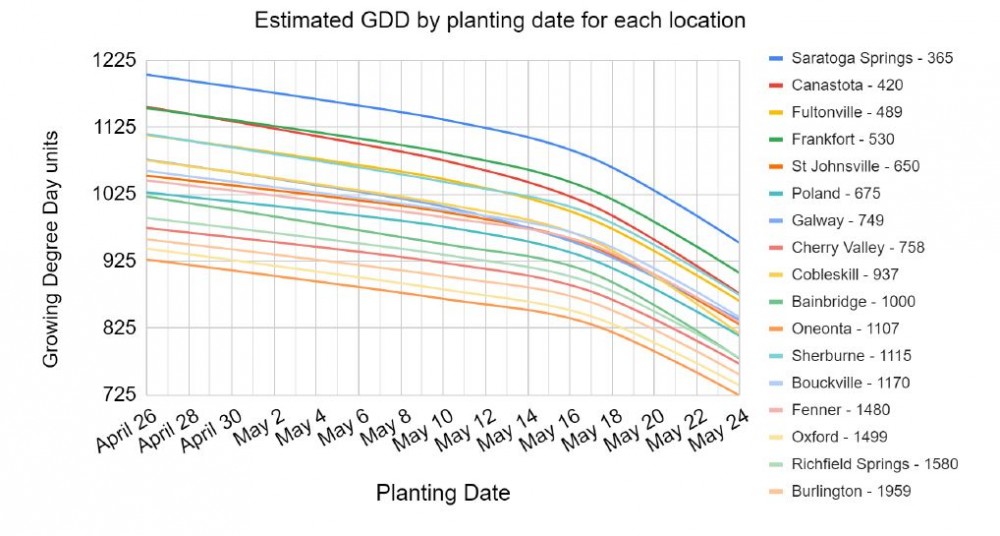
We're finally in the clear in terms of drought, but the North Country just cannot catch a break:
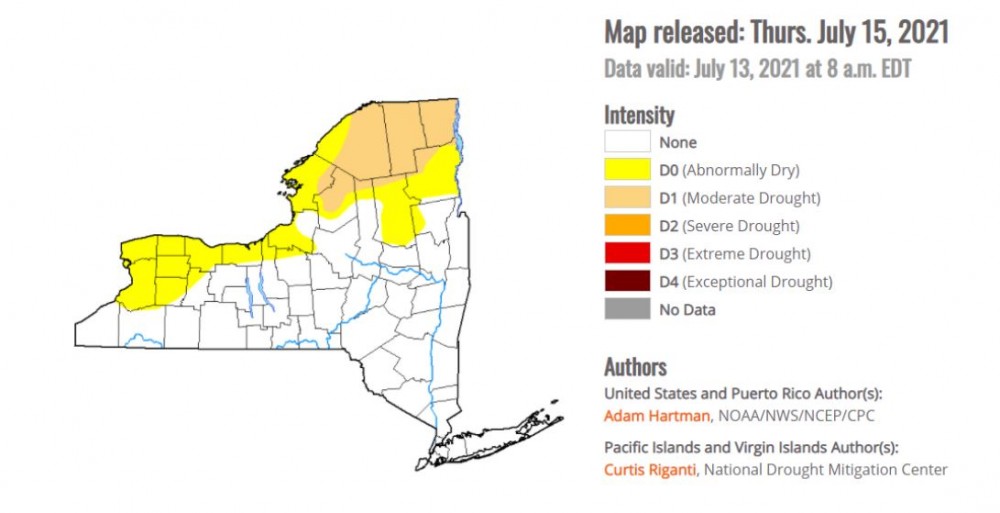
3. Pest Monitoring
Last week, potato leafhopper numbers were just under threshold and one new seeding was above threshold. But the rain storms must have knocked those populations back because all of those same fields were well-below threshold this week. That won't happen with every storm, so we can't rely on that pattern in the future, but it worked out in our favor this time.
True armyworm traps yielded one moth in our Herkimer trap, but this is the second generation and will not threaten field corn. This is almost certainly from the second generation, which could cause damage in sorghum forage and potentially hayfields if numbers are especially high (this trap is surrounded by hay acreage, but it is not a damaging number). We'll keep monitoring them for another few weeks.
The third week of western bean cutworm trapping yielded two moths in our Herkimer Co trap, and one in Saratoga Co. High trap numbers suggest that there may be significant eggs laid in pre-tassel corn, and larvae may cause damage to ears. We'll keep an eye on this pest through August.
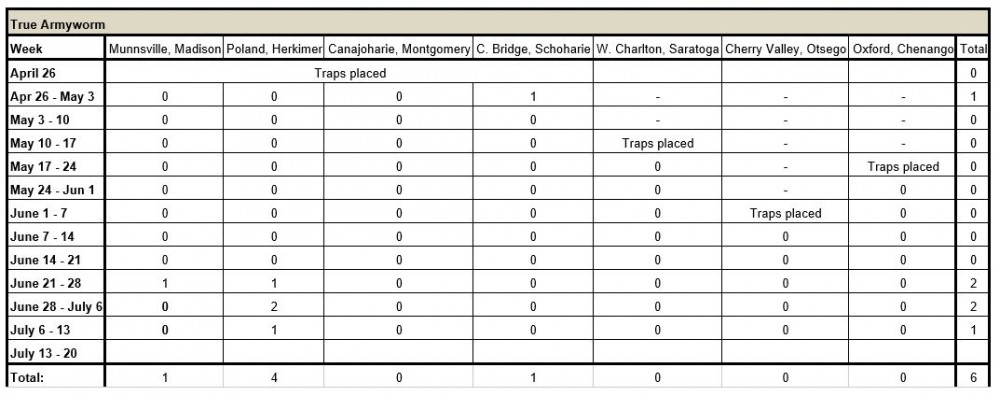

Some helpful links:
New York State IPM Weekly Field Crops Pest Report
Video: Potato Leafhopper Scouting and IPM Thresholds in Alfalfa
Field Crop Update July 16, 2021 (pdf; 797KB)
Upcoming Events
Labor Roadshow IX
December 1, 2025
December 9 - December 10, 2025December 17 - December 18, 2025December 22, 2025
In-person and online events to keep NY's agricultural employers informed and prepared for today's labor challenges.
2026 Dairy Day
January 13, 2026 : Dairy Day - Hamilton
Hamilton, NY
Lunch included
January 14, 2026 : Dairy Day - Ballston Spa
Ballston Spa, NY
Lunch included
2026 Corn & Soybean Day
January 20, 2026 : Corn & Soybean Day - Hamilton
Hamilton, NY
Lunch included. 2.75 DEC Credits available
January 21, 2026 : Corn & Soybean Day - Ballston Spa
Ballston Spa, NY
Lunch included. 2.75 DEC Credits available
Announcements
Statewide Field Crop Pathology Needs Assessment Survey
Your input is wanted for identifying priorities!Sign Up for Our Weekly E-Newsletter
We send out a bi-weekly e-newsletter that has announcements, upcoming programs, and opportunities for you! Registration is quick, easy, and free. Click here to sign up today!Farmers Can Join MeatSuite For Free!
MeatSuite.com is a free resource provided by Cornell University where NY meat farmers can create a farm profile and list their bulk (wholes, halves, quarters) and bundled (i.e. Grilling Bundle) meat products.Why should farmers join?
1. It's free and easy!
2. Connect with more local customers. In the past year the MeatSuite.com farm directory had 8,300 visits from New York consumers. Farm profiles get as many as 25 views per month from potential local customers. We also spotlight MeatSuite farms on social media and bring attention and purchases to farms through highlights and giveaways.
How do I join?
Farmers can visit https://www.meatsuite.com/farmers/ to create a free farm profile. You must list at least one product for your farm's profile to go live. You'll also have access to Cornell's free Meat Price Calculator, a helpful tool for pricing your meat to make a profit.
While you're on MeatSuite, check out the "Creating Consumer-Friendly Bulk Meats" publication on the log-in page. It has tips on how to create bulk meat products that are easier for first-time buyers to say "yes" to.
If you have any questions as you create your farm profile or products, we're here to help! Please email Matt LeRoux at mnl28@cornell.edu.

